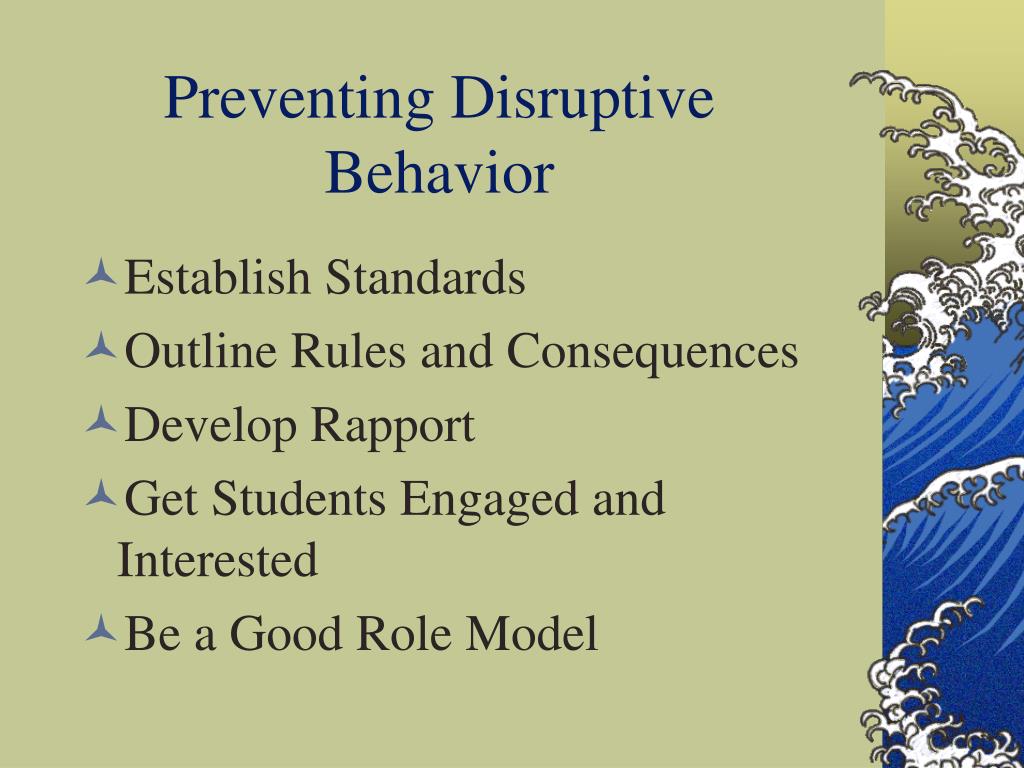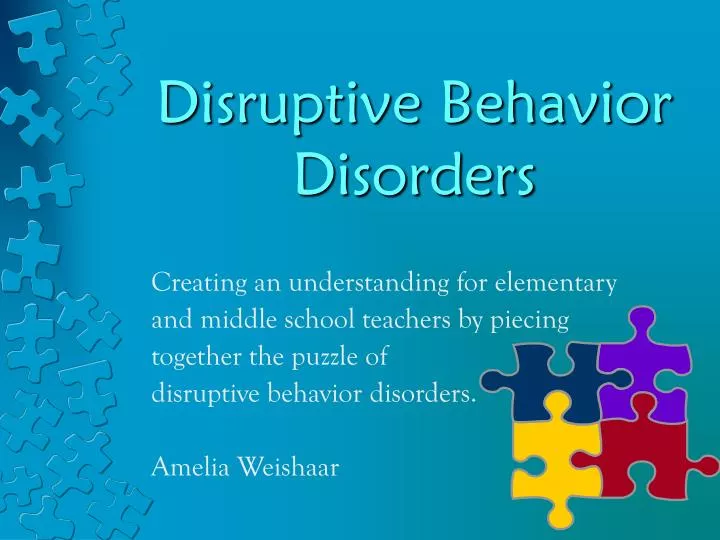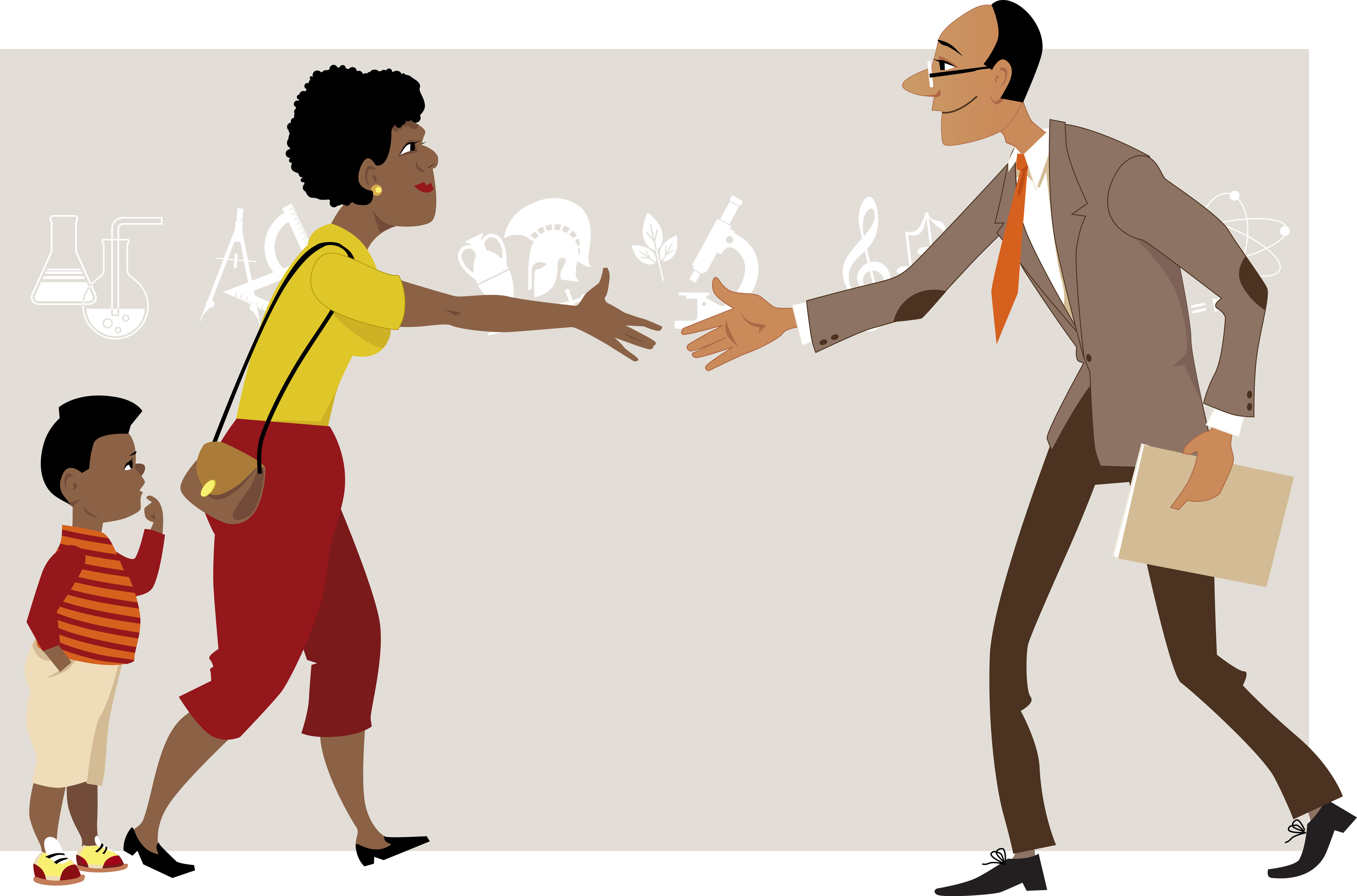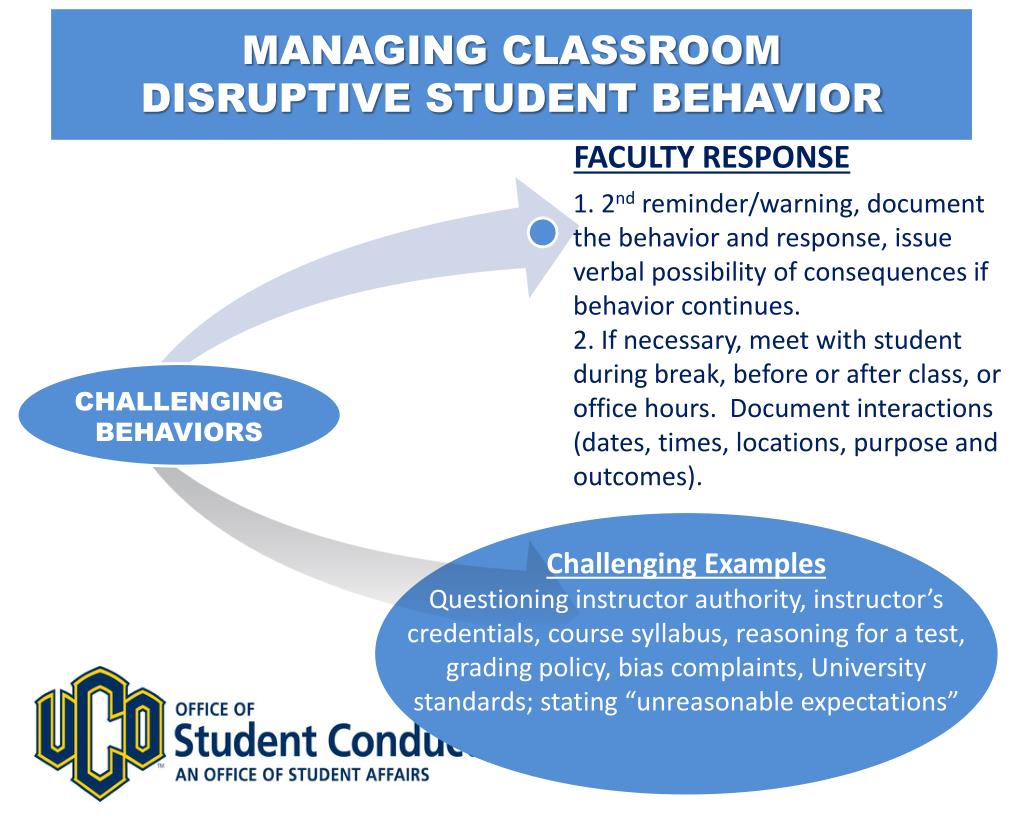Disruptive Behavior In Classroom Presentation
| Introduction to Disruptive Behavior in the Classroom | ||
|---|---|---|
| Disruptive behavior refers to any action or behavior that hinders the learning process in a classroom setting. It can include actions such as talking out of turn, being disrespectful to the teacher or classmates, or refusing to follow instructions. Disruptive behavior can have a negative impact on both the disruptive student and their classmates. | ||
| 1 | ||
| Types of Disruptive Behavior | ||
|---|---|---|
| Talking out of turn: Students who consistently interrupt the teacher or classmates during instruction. Physical aggression: Students who engage in physical altercations with peers or display violent behavior. Chronic lateness or absence: Students who frequently arrive late to class or miss school without a valid reason. | ||
| 2 | ||
| Causes of Disruptive Behavior | ||
|---|---|---|
| Lack of structure: Classroom environments that lack clear expectations and rules can lead to disruptive behavior. Boredom: Students who are not intellectually stimulated or find the curriculum uninteresting may act out. Emotional or social issues: Students who are dealing with personal problems at home or difficulties with peers may exhibit disruptive behavior. | ||
| 3 | ||
| Impact of Disruptive Behavior | ||
|---|---|---|
| Decreased learning opportunities: Disruptive behavior can disrupt the flow of instruction and limit the amount of time spent on learning. Negative classroom climate: Disruptive behavior can create a tense and uncomfortable atmosphere for both the teacher and students. Teacher burnout: Constantly managing disruptive behavior can lead to increased stress and burnout for teachers. | ||
| 4 | ||
| Strategies for Addressing Disruptive Behavior | ||
|---|---|---|
| Establish clear expectations: Clearly communicate and enforce classroom rules and expectations from the beginning of the school year. Positive reinforcement: Recognize and reward students for positive behavior to encourage a more conducive learning environment. Individualized interventions: Identify the underlying causes of disruptive behavior and provide targeted interventions or support for students. | ||
| 5 | ||
| Classroom Management Techniques | ||
|---|---|---|
| Proximity control: Positioning yourself near the disruptive student can help redirect their attention and discourage disruptive behavior. Non-verbal cues: Use non-verbal signals such as eye contact or hand gestures to redirect the student's behavior without disrupting the flow of instruction. Peer support: Encourage positive peer interactions and assign students to work in groups to promote collaboration and reduce disruptive behavior. | ||
| 6 | ||
| Collaboration with Parents and Guardians | ||
|---|---|---|
| Maintain open lines of communication with parents or guardians to discuss and address any behavioral concerns. Involve parents in developing behavior plans or strategies to support their child's behavior management at home and in school. Seek their input and feedback to ensure a consistent approach in addressing disruptive behavior. | ||
| 7 | ||
| School-wide Support Systems | ||
|---|---|---|
| Implement a school-wide positive behavior support system to reinforce positive behavior and discourage disruptive behavior. Provide professional development and training for teachers on effective classroom management techniques. Foster a supportive and inclusive school culture that promotes respectful behavior and positive relationships. | ||
| 8 | ||
| Consequences and Restorative Practices | ||
|---|---|---|
| Consistently apply consequences for disruptive behavior, such as loss of privileges or additional assignments, to teach accountability. Utilize restorative practices, such as mediation or reflective discussions, to help students understand the impact of their behavior and make amends. Focus on teaching and reinforcing positive behavior rather than solely relying on punitive measures. | ||
| 9 | ||
| Conclusion | ||
|---|---|---|
| Disruptive behavior in the classroom can hinder the learning process and create a negative classroom climate. By implementing strategies for addressing disruptive behavior, collaborating with parents, and utilizing school-wide support systems, educators can create a more conducive learning environment. It is important to prioritize the well-being and academic success of all students by addressing disruptive behavior promptly and effectively. | ||
| 10 | ||









